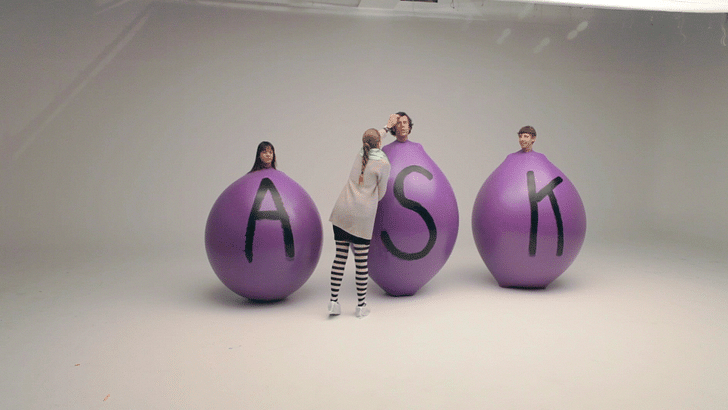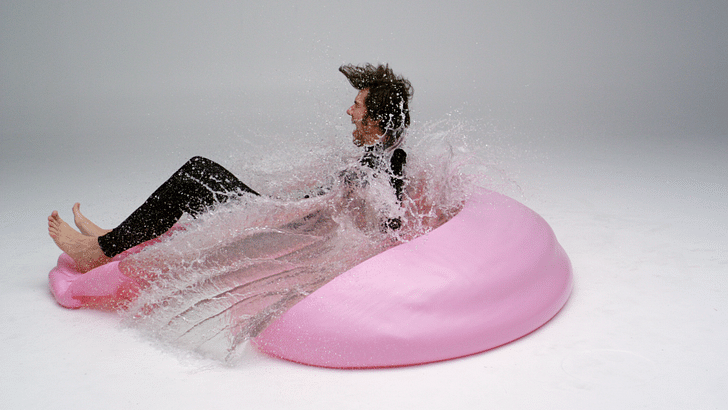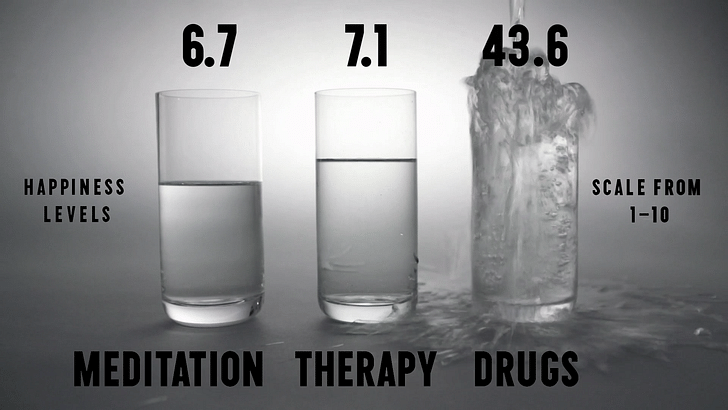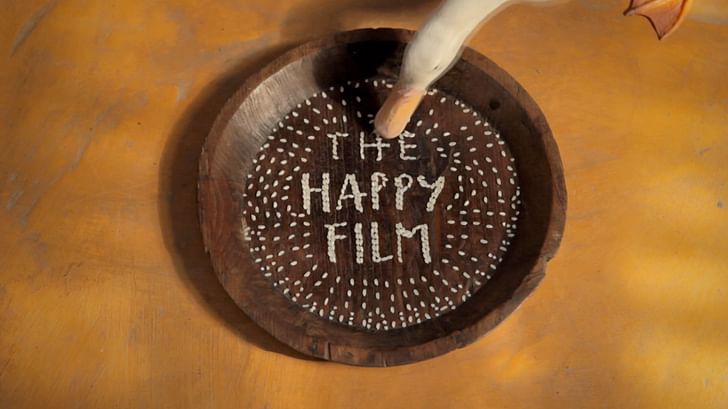

Graphic designer par excellence Stefan Sagmeister, bored with creating iconic album covers for The Talking Heads and Lou Reed (among others), decided to document his search for love and greater meaning over a six year period with collaborators Ben Nabors and the late Hillman Curtis. The result, "The Happy Film", is an occasionally affecting tour of one man’s methodical, gorgeous solipsism.
Award-winning work, fame, even a sizable apartment in New York City: it doesn’t make one happy, at least to hear Stefan Sagmeister tell it. The inventive graphic designer begins his quest to document and if he has done a creative act before, he is bored by it; and if he has never attempted it, he is anxiousincrease his own relative happiness shortly after breaking off an eleven-year relationship with his girlfriend, lamenting his emotional state in front of a moody Sydney harbor. Combining vivid cinematography with playful title sequences and hilariously conceived and paced edits, Sagmeister briefly consults with a few Ph.D.-bearing experts and then decides to measure his happiness on a ten-point scale, a gradation he represents by the amount of water in a glass. One of the experts tells him that there are three principal avenues to happiness: meditation, cognitive therapy, and drugs.

So, Stefan signs up for an immersive course in meditation, which results less in mind-clearing thoughts than a series of profound backaches. However, the meditation tangentially causes a romance to blossom with a woman who chooses to remain off-screen. Stefan falls rapidly and deeply in love, representing this romance with nuanced cut-out stick figures who are illuminated to produce shadow. Stefan monologues to the camera about having children, but the relationship rapidly runs into problems; his lover doesn’t want kids. There’s a fight; the cut-out figures burst into flame.

But not all is lost: while the romance is unfolding, the audience is given a glimpse into Stefan’s working process and his general frame of mind as he creates a live-action title sequence with resplendently attired dancers. He reveals that if he has done a creative act before, he is bored by it; and if he has never attempted it, he is anxious. Which is perhaps why, when he starts up a round of cognitive therapy to determine if he has His therapist ventures to guess that Stefan fears confrontationcommitment issues, the audience is beginning to understand why he has such a hard time maintaining romantic relationships. Stefan is winningly up front about his eccentricities; he displays a journal in which he notes per week how much alcohol he has drunk, how many times he has visited with friends, and how many women he has dated that are twenty or more years younger than he is. He rates his relative success as a person on a five point scale; amusingly, while the fifty-something can refrain from drink, he can’t seem to stay away from the younger ladies.
In therapy, Stefan discusses a long-time crush of his living in his hometown that he decided to look up and bring to New York. Like his first romance, this second romance prefers to remain anonymous, and so is given the moniker “Ms. Private.” Stefan recounts the romance of spending a perfect week in New York City together, and the corresponding disappointment of realizing that his crush and he are more companionable than passionate. His therapist ventures to guess that Stefan fears confrontation; Stefan agrees. More eye-catching sequences flood past; Stefan fills his happiness glass from therapy to 7.1, which is slightly better than the 6.7 pour that meditation garnered.

It is here that the film gains a perspective that is less graphically exquisite and more messily human. Hillman Curtis, the co-director of the film, has terminal cancer. In a raw dialogue between the two men, Stefan confronts his fear of conflict by asking Curtis to be more involved in the process; Curtis confronts his fear of dying by doing everything in his power to live to the fullest. Curtis promises Stefan that he will provide a narrative emotional core to the film, but unfortunately Curtis dies before the film is completed. What’s striking about this exchange is how it reveals Stefan’s own self-awareness as essentially a gifted aesthetician who lacks deep emotional comprehension. Oddly, this gives the documentary a graspable center: the audience is genuinely experiencing Stefan’s reality. When Stefan laments Curtis’ passing with a close-up shot of a coffee machine brewing, it reinforces that the man processes his feelings through the arrangement and manipulation of objects.

When Stefan finally decides to try anti-anxiety medication, the film goes full-tilt into its third act: within days of starting the medication, Stefan falls in love with a nubile German journalist and asks her to marry him. the man processes his feelings through the arrangement and manipulation of objects His happiness-measuring water glass overruns ecstatically, but there’s also the darker current of Stefan’s incomparable sense of craft; he wonders openly if it’s simply the drugs. Even so, he can't deny the sweltering rush of his feelings. A therapist notes that with each stage of the happiness-seeking process, Stefan has fallen for a different woman: will it work this time? And perhaps more importantly, with all this entertaining design, does it matter?
Stefan both begins and ends the film with the visual of a woman joyfully airlifted by a gaggle of yellow and brown balloons. He had originally planned to be the one airlifted, but a miscalculation in load-bearing due to weather conditions kept him grounded. Conceptually, it’s a brilliant choice: Stefan’s life ultimately does imitate his art.

"The Happy Film" premiered at the 2016 Tribeca Film Festival and screened most recently at the Architecture and Design Film Festival in New York City.
Julia Ingalls is primarily an essayist. Her work has appeared or is forthcoming in Slate, Salon, Dwell, Guernica, The LA Weekly, The Nervous Breakdown, Forth, Trop, and 89.9 KCRW. She's into it.
1 Comment
Sagmeister is so overbearingly self-promotional it overshadows the little merit the handmade body art has.
Block this user
Are you sure you want to block this user and hide all related comments throughout the site?
Archinect
This is your first comment on Archinect. Your comment will be visible once approved.